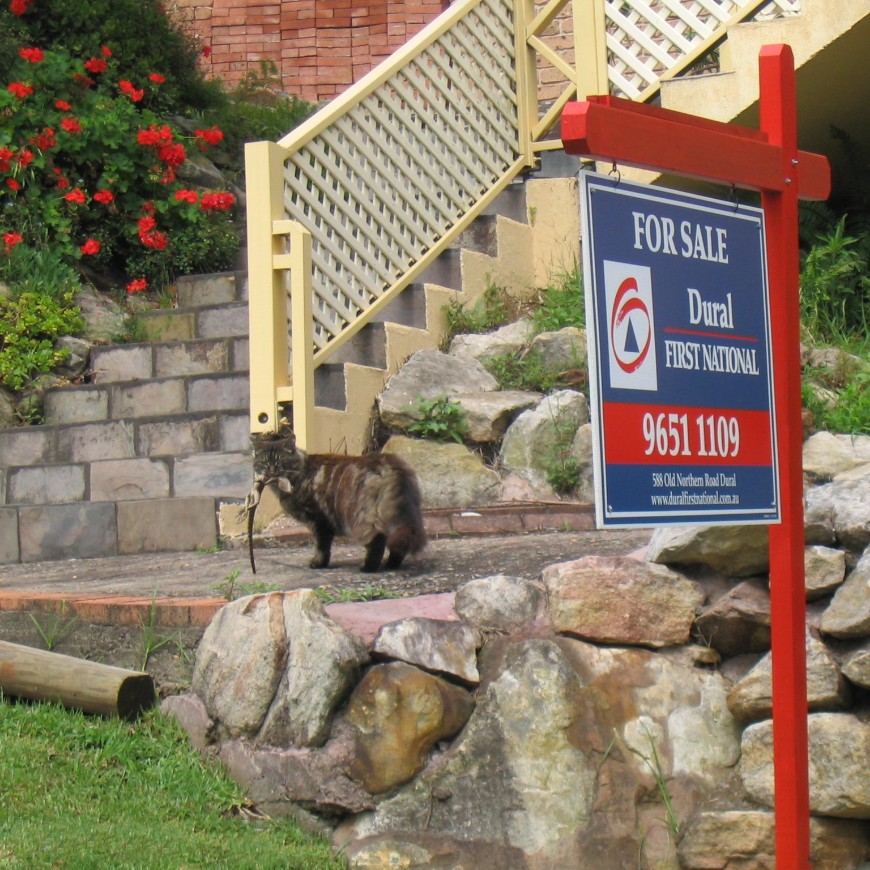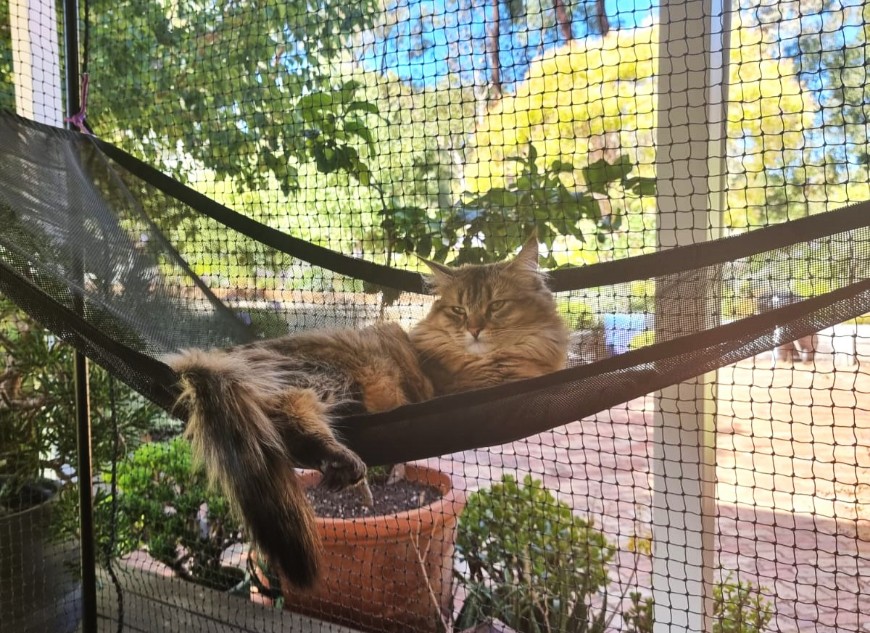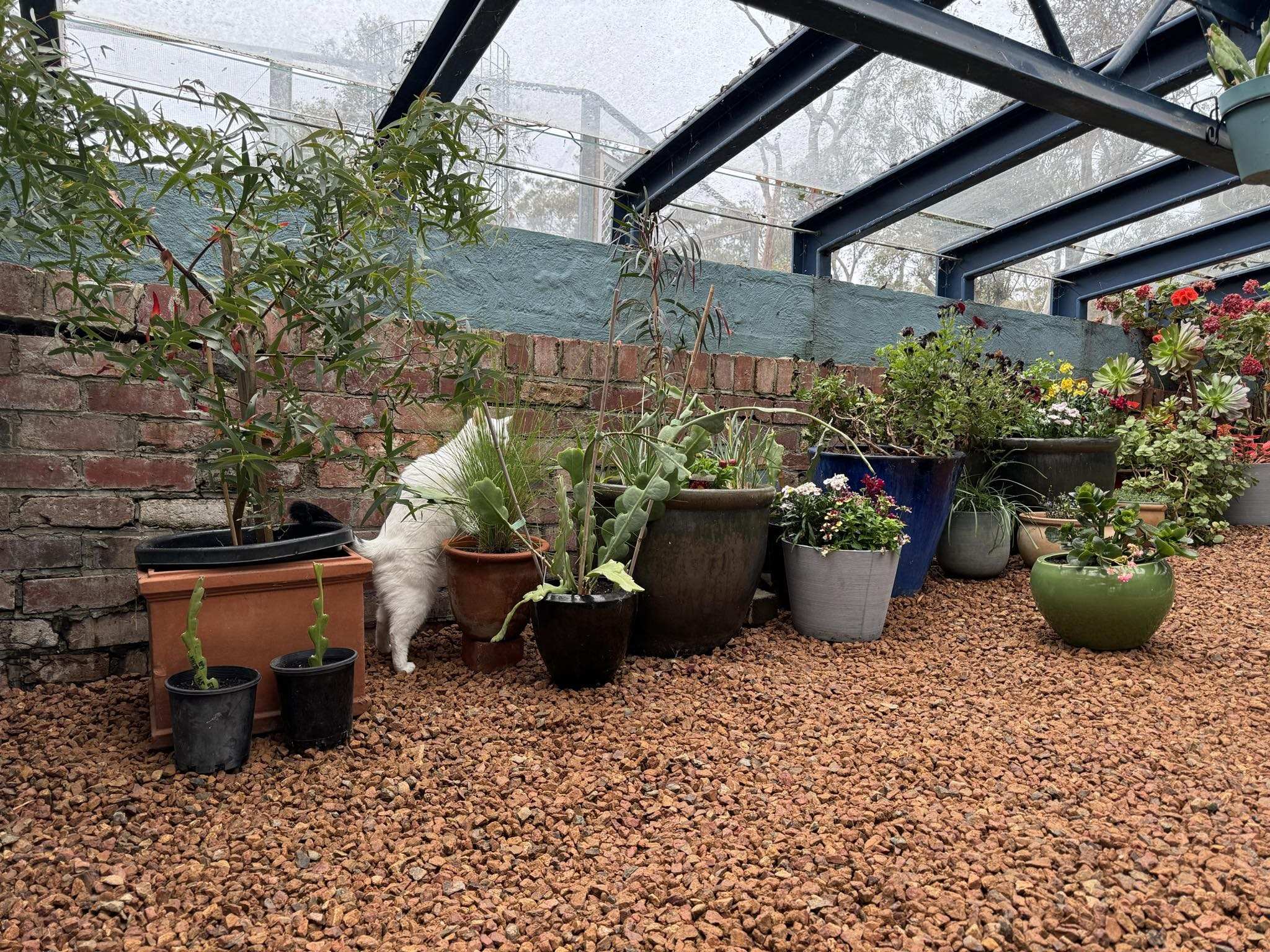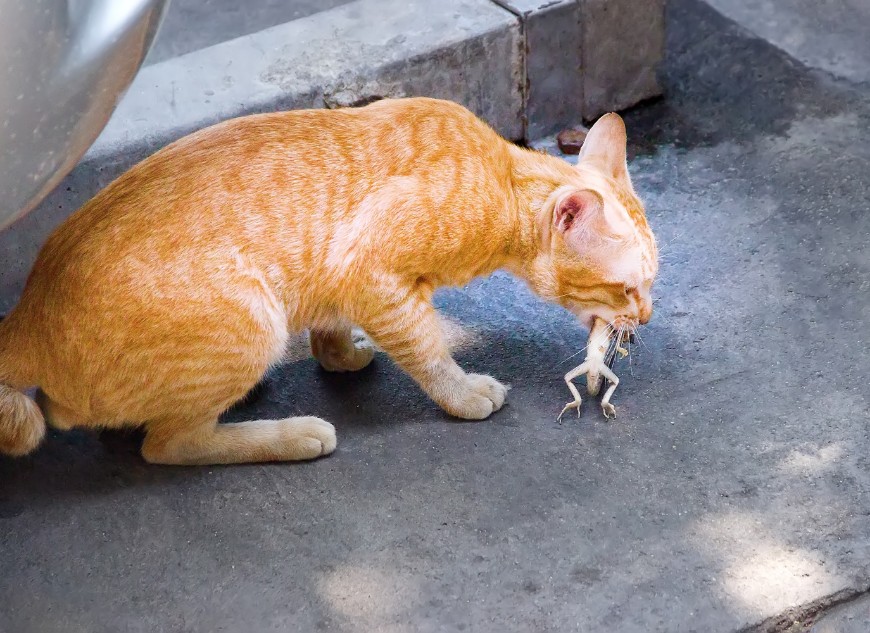Owning a pet is a responsibility not a right. As pets, cats are wonderful companion animals and have a range of health benefits for their owners. Over 30% of Australian households have a pet cat, with 5.3 million pet cats in Australia. But if not managed well, pet cats can also be a nuisance to the community and have serious impacts on native species, agriculture and human health.
Being a responsible pet owner is about keeping your loved pets safe, happy and healthy, while also protecting local wildlife, being a good neighbour and looking after human health.
“Pet cats who are safely contained at home are at less risk (e.g. they are less likely to be injured by cars, other cats, dogs, and other animals). Keeping your pet cat happy at home means providing for all their needs, including some that may previously have been met by roaming outdoors.” RSPCA Safe and Happy Cats
The South Australian Cat Tracker Project (6.3MB) demonstrated that pet cats, allowed to roam, have been shown to range between 0.07 hectares to 31.13 hectares, with a median of 1.04 hectares (equivalent to twenty 500 m2 residential properties). A cat tracker project in north west Tasmania had similar results. Wandering cats crossed more roads and got into more fights.
While you may not see it, all roaming cats will hunt, they have evolved this way. It is estimated pet cats bring home just 15% of their prey and do not hunt just because they are hungry. On average, pet cats that are allowed to roam eat 186 animals a year, 110 of which are native. Although pet cats kill introduced species more often than feral cats living in natural environments, the toll of native animals killed per square kilometre by pet cats in residential areas is much higher than the toll per square kilometre by feral cats because there are more of them. Some studies have reported high mortality rates from pet cat predation on wildlife populations. There are numerous examples of where pet cats have been shown to have caused major losses of wildlife, including some local extinctions (Legge et al. 2020).
There is no evidence that pet cats exert significant control of introduced species. Rat and mice populations are regulated more by available food, than top down predation pressure from cats.
Responsible pet cat ownership involves desexing, microchipping, identifying and containing your pet cats to your property.
Cat-containment options including keeping your pet cat indoors, building outdoor ‘catios’ or cat runs, installing cat-proof fencing around yards, walking pet cats on leads and only allowing pet cats outside under supervision.

Pet cats bring home less than 15% of their prey. Photo: Joe Sydney.
Cradle Coast NRM Cat Tracker project showed pet cat territories in urban areas ranged between 3 and 16 properties. Image: Cradle Coast Natural Resource Management.
Advantages of pet cat containment
- On average, confined cats live longer healthier lives compared to roaming cats, because they are protected from various hazards and health risks.
- Containment reduces transmission of contagious diseases and parasites like feline leukemia, feline immunodeficiency virus, fleas and ticks. Confined cats have limited contact with other animals, reducing the risk of contracting and spreading disease.
- Containing your cat reduces the risk of transmission of toxoplasmosis from your pet cat to people in your house.
- Containment prevents accidents and misadventure, such as car collisions, attacks by other animals and accidental ingestion of toxic substances or plants.
- Containment avoids nuisance behaviour such as digging in gardens and territorial disputes. This also contributes to peaceful coexistence with your neighbours.
- Containing your pet cat prevents loss or impoundment by making it difficult for your cat to wander away, get lost or be stolen. This reduces stress and financial burdens on owners.
- Desexing and containment controls unwanted breeding, preventing unwanted litters, reducing overpopulation, and minimising undesirable behaviours like roaming and yowling.
- Containment reduces ownership costs by resulting in fewer veterinary bills due to accidents or illnesses and fewer behavioural issues.
- Containment can help strengthen the human–animal bond. Pet cats that receive proper attention, care and mental stimulation in a contained environment tend to develop stronger bonds with their owners.
- Containing your cat minimises harm to wildlife, particularly birds and mammals, by preventing cats from hunting and preying.

Catios, roller tops to fences, enclosing gardens and balconies can keep your pet cat safe at home. Photo: WA Feral Cat Working Group.

Close in outside areas to provide your pet cat with a safe place to play. Photo: Jody Bush.
Things to consider about pet cat containment
- There are no disadvantages to being a responsible pet owner.
- State, territory and local authorities have different rules about pet cat ownership. Consult your local council about regulations.
- Containment is more than just closing the door, you need to provide food, water, places to toilet, toys and scratching spots and places to look outside.
- Watch for ‘door-dashing’ cats. You need a way to stop cats escaping out open doors and windows.

Containing your pet cat reduces harm to wildlife. Photo: Maximillian Cabinet.
Effective use
Responsible pet ownership is one of the most effective strategies for limiting pet cats contributing to environmental damage. As well as keeping your pet cat safe at home, there are several other steps that owners should take to be a responsible pet owner.
Microchip and register your pet cat
Most councils require microchipping of any owned pet cats and some require registration. The procedure is carried out by a vet and is quick, safe and easy and side effects are uncommon.
If your pet goes missing and ends up at a cat management facility, shelter or vet clinic, they will be scanned for a microchip. The unique identification number attached to the cat can then be linked to you through the online microchip registry. If your pet cat gets caught during a feral or stray cat management program, they can be identified and returned to you.
Collar and identify your cat
As well as microchipping, identify your cat with an identification tag on a quick-release collar so it is easy to see that your cat is a pet and not a stray. This will help ensure your pet is returned to you if they are lost or trapped as part of a management program.
Desex your cat
Desexing is a surgical sterilisation of your pet under a general anaesthetic by a vet.
Desexing stops unwanted litters, reducing the problem and costs of unwanted pets. It increases your cat’s life expectancy and reduces behaviours such as spraying, fighting, roaming and yowling.
Desexing your pet cat is required by law in some states of Australia, including the Australian Capital Territory, Tasmania, South Australia and Western Australia. Local councils in other states may require pet cats to be desexed.
Permits for multiple cats
Some states have legislation that limits the number of cats you can keep on a property. Adhering to these rules ensures that each pet cat is properly cared for. Check your local council and state government regulations.
Seek a permit to breed cats
In some states, if you are not a registered breeder, you need a lodge an application for a Cat Breeding Permit if you want to breed from your pet cat. These rules ensure that pet cats are bred responsibly and reduce the number of unwanted cats that end up in shelters. Check your local and state government regulations.
Do not feed stray cats
Feeding stray cats encourages the problems associated with stray cats, including an increased risk of spreading diseases, increased chances of introducing a cat colony and increased risks to local wildlife. A better action is to adopt the stray cat and become a responsible pet cat owner or take stray cats or kittens to the council or RSPCA or report their presence to the council. Stray cats, even when fed, often have short, hard lives due to fighting, disease, parasites, vehicle collisions and other hazards.
Never dump unwanted cats or kittens
Dumping unwanted cats is not a solution as their life will be very hard and likely cut short. Dumping or abandoning cats or kittens is an offence under local laws in some states and severe penalties can apply. Dumped cats are likely to become feral, prey on local wildlife and otherwise become a public nuisance.
Provide a safe and stimulating environment for your pet
Make sure your pet cat has a safe and cozy space inside or a secure outdoor enclosure to keep them safe from hazards like vehicles, predators and harsh weather. Remember cats are naturally predators as well as prey, they will need somewhere to hide to feel safe and secure.
Provide an enriching space with items like scratching posts, toys and perches to maintain their mental and physical stimulation. Engage in meaningful interactions with your cat by playing, grooming and forming affectionate connections.
As sociable creatures, cats flourish with positive engagement from humans. Offer them chances for mental enrichment and physical activity to avert boredom and enhance their overall health and happiness.
Provide proper veterinary care for your pet
Arrange for consistent veterinary appointments to keep track of your cat’s health, ensure they receive vaccinations and deal with any health issues.
Provide for cats’ basic needs
Ensure your pet cat receives a well-balanced diet suitable for their nutritional needs. Cats are carnivours and can not digest plant based carbohydrates. Always have fresh water available and keep an eye on their eating patterns to help them maintain a healthy weight. Maintain a hygienic environment for your pet by providing a clean litter box and consistently cleaning and upkeeping it, which helps prevent any aversion to using the litter box. In homes with multiple pet cats, it is important to have several litter boxes available.
Control food sources
Stop feral or roaming cats from visiting your property or nearby properties by restricting food sources they might try and access. For example, keep pet food secured, properly dispose of rubbish and encourage your council to fence rubbish tips.
More information
Through responsible cat ownership, you can ensure a nurturing, secure and rewarding existence for your cat, fostering peaceful co-existence within the community and reducing ecological footprints. Resources include:
- RSPCA recommendations on Keeping your cat safe and happy at home
- Safe Cat, Safe Wildlife is a joint initiative between RSPCA Victoria and Zoos Victoria, proudly supported by Petstock..
- TassieCat provides expert advice and useful resources to help you keep your cat safe, healthy and happy while protecting our wildlife and our communities. Useful links to information on methods and materials to contain pet cats.
- Responsible cat ownership in Australia is factsheet from the National Environmental Science Programme’s Threatened Species Hub.
- The management of cats by local governments in Australia: summary of national survey results, with outcomes and recommendations from the NESP Threatened Species Hub.
- Build your own cat enclosure – A step by step guide (TassieCat, pdf).
- Pet cat proof your yard instructions (Autodest Instructables).
- Pet cat containment enclosures and fencing (Animal Welfare Victoria).
Banner photo: Gillian Basnett.

Provide a safe and stimulating environment for your pet cat. Photo: Gillian Basnett.

Pet cats can be taken outside on a lead to provide exercise and stimulation. Photo: Marneejill via Flickr.
